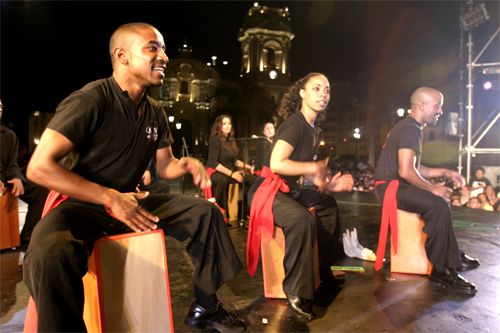What you may not know before arriving to study Spanish in Peru is that there is a large Afro-Peruvian population in the country. Many people do not realize that imported Africans and their descendants had such a strong impact on the evolution of the country’s culture. Today, people of African descent make up approximately 10-15 percent of the country’s total population.
Slaves were first brought to Peru with the conquistadors. They continued to be imported all through the years of the slave trade, up until slavery was outlawed in 1856. Initially, there were two categories of Africans: bozales and ladinos. Bozales were born in Africa, largely untrained, and worked mainly on sugar and cotton plantations and shipyards. The ladinos actually had previous exposure to Spanish culture and spoke the language. They were often skilled artisans, such as carpenters and tailors. The work of ladino blacksmiths was highly sought after, to the point that the slaves were sometimes even paid for their work.
At first, Afro-Peruvians played an intermediary role between the Spanish colonists and native Peruvians. But as the Spanish and indigenous people continually syncretized their cultures, the Afro-Peruvians were pushed to a lower social strata as they were no longer considered to be as vital in intercultural relations.
Afro-Peruvians have contributed tremendously to Peru’s culture, especially in regards to music and dance. They developed the cajón, a wooden box that is one of the country’s national instruments. It developed due to the fact that traditional African instruments like marimbas and drums were once banned. Africans started to use everything they could get their hands on as substitutions, and so tables, chairs and wooden boxes all became makeshift instruments.

Every year in Chincha and El Carmen, The Verano Negro festival is held to celebrate the food, music, dance and poetry of Afro-Peruvians. It takes place at the end of February for 10 days. Among the activities are parades, dance contests, beauty pageants and Afro-Peruvian/Creole food fairs. If you learn Spanish in Peru during the summer, you can also attend the festivities for Afro-Peruvian Culture day, which is June 4th.